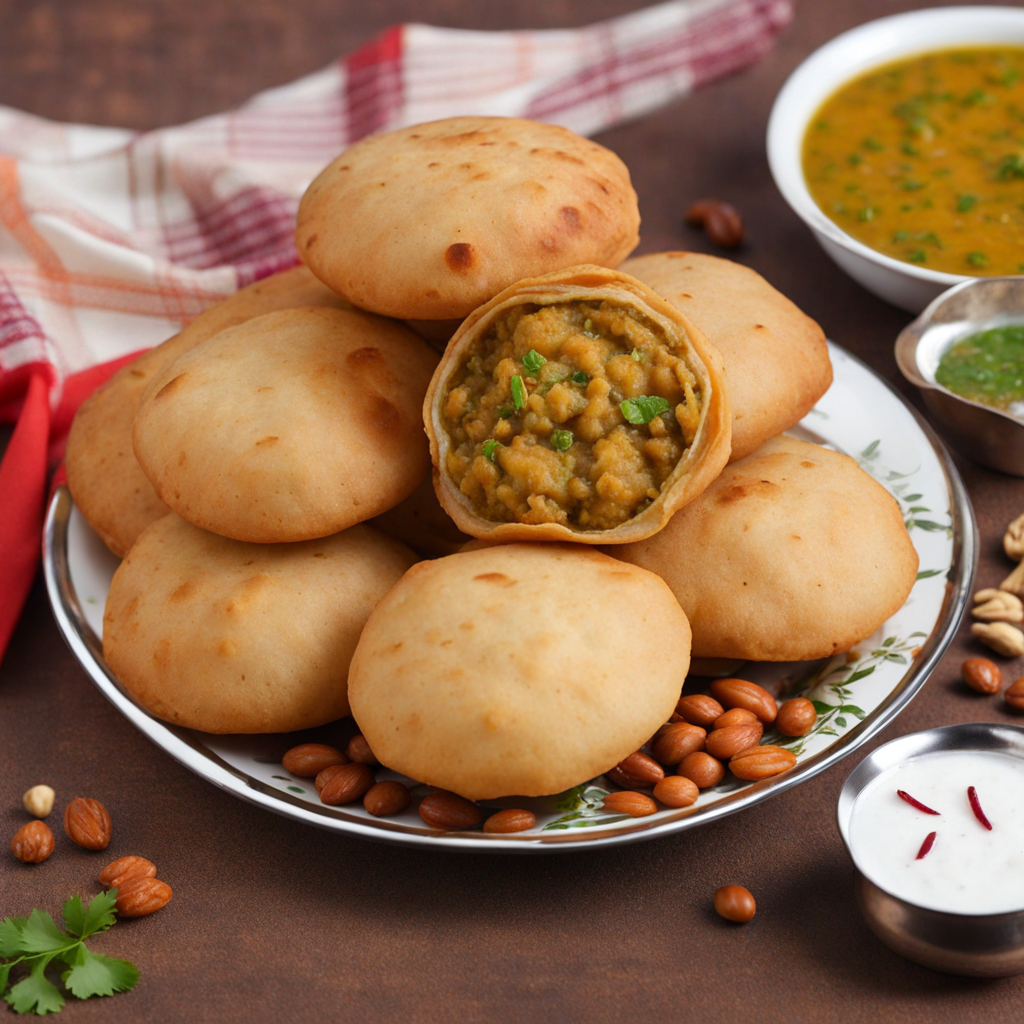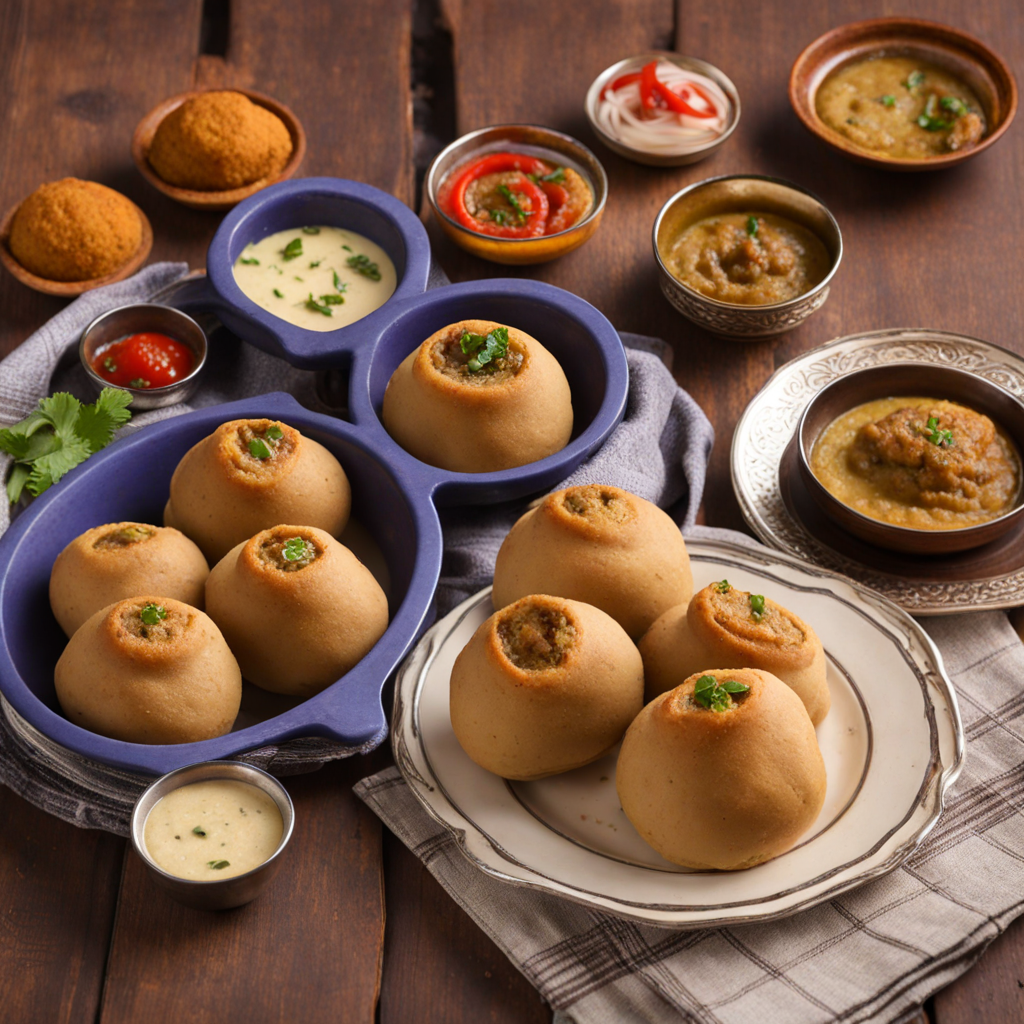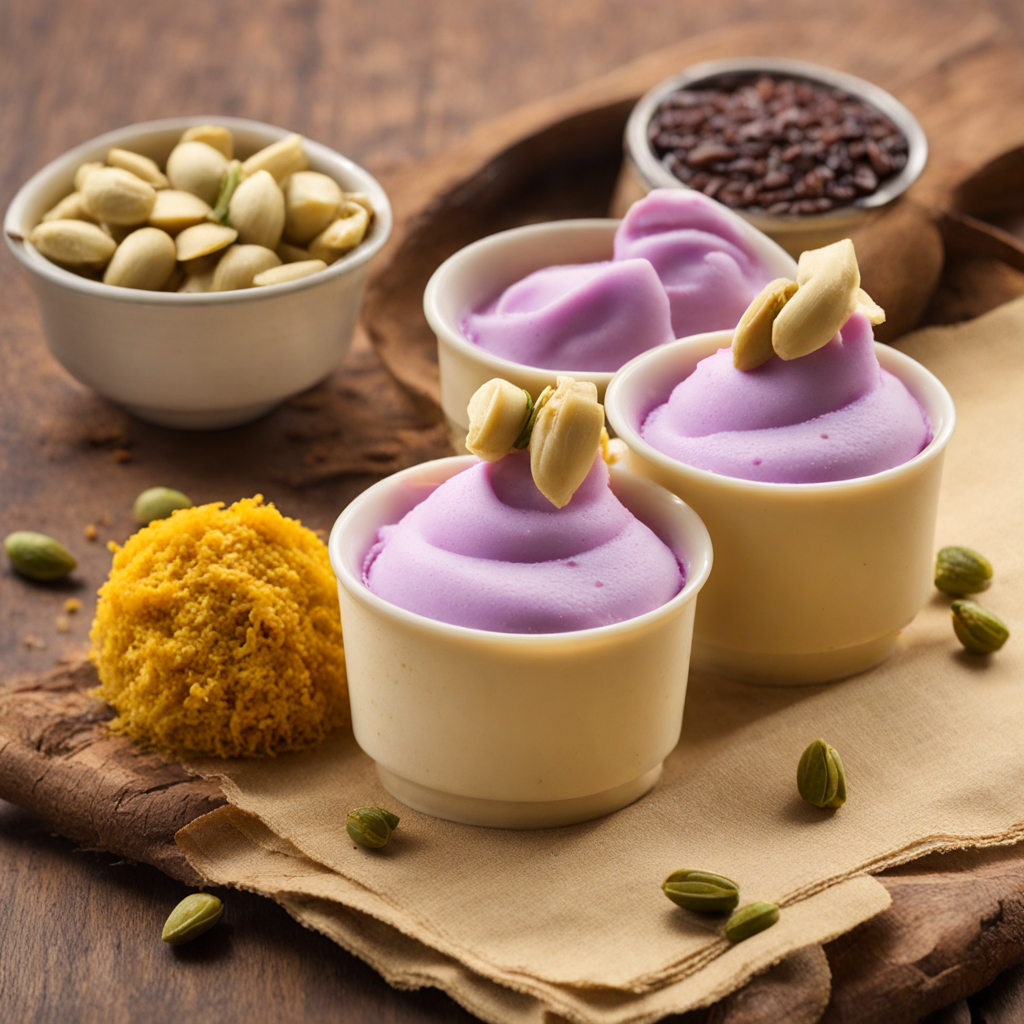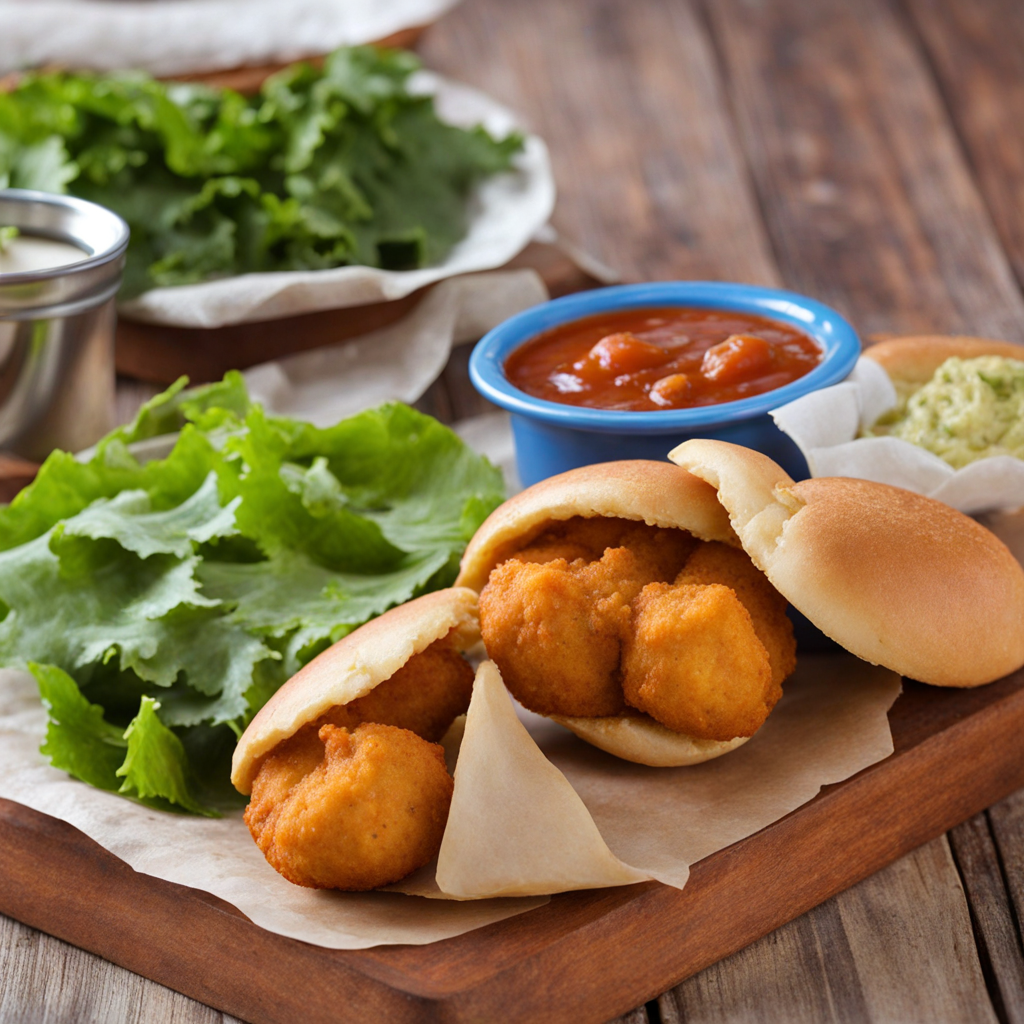Pani Puri
Pani Puri is a beloved street food from India, known for its vibrant flavors and delightful textures. At the heart of this dish are small, round, hollow puris, which are crispy and golden-brown. These puris are made from semolina or wheat flour, and are deep-fried until they puff up and become light and airy. Each puri serves as a little vessel, ready to be filled with an assortment of vibrant ingredients that create a burst of flavor in every bite. Traditionally, Pani Puri is served with a spicy and tangy water known as 'pani.' This flavorful water is made from a blend of tamarind, mint, coriander, and an array of spices, giving it a refreshing kick. The puris are filled with a mixture of mashed potatoes, chickpeas, or sprouts, seasoned with spices, and then dipped into the pani just before eating. The combination of the crispy puri, the soft filling, and the zesty water creates an exciting contrast that dances on the palate. Eating Pani Puri is an experience in itself; it's a hands-on affair that invites you to pop the entire puri into your mouth for maximum enjoyment. The explosion of flavors – the heat from the spices, the sweetness from the tamarind, and the cooling effect of mint – creates a delightful symphony that leaves you craving more. Often enjoyed as a snack or appetizer, Pani Puri is not just a dish but a celebration of Indian street food culture, making it a must-try for anyone looking to discover new and exciting tastes.
How It Became This Dish
Origins of पानी पुरी The delectable street food known as पानी पुरी, also referred to as golgappa or puchka in different regions of India, has a rich and storied history that dates back centuries. It is believed that this dish originated in the ancient city of Varanasi, known for its spiritual and cultural significance. The tale often recounts how the dish was created during the time of the Mahabharata, where it was said that the Pandavas, in their disguise, were served a similar dish by a loyal subject. As culinary practices evolved, so did the dish, leading to its current form, which has captured the hearts and palates of millions. This dish consists of hollow, crispy puris filled with a mixture of spiced potatoes, chickpeas, and tamarind water, creating a burst of flavors with each bite. The use of tamarind water, known for its tangy taste, adds a unique twist to the dish, making it both refreshing and piquant. The puris are made from semolina or wheat flour, which is kneaded into a dough, rolled into small discs, and deep-fried until they puff up to create a hollow vessel that holds the flavorful fillings. \n\n Cultural Significance In India, पानी पुरी is more than just a snack; it is a cultural phenomenon that transcends regional boundaries and social classes. It is often associated with lively street food culture, where vendors set up stalls in bustling markets and busy corners, drawing crowds eager to indulge in this flavorful treat. The social aspect of enjoying पानी पुरी is deeply ingrained in Indian culture, where friends and families gather to relish the dish together, sharing laughter and stories over a plateful of these delightful bites. The preparation and consumption of पानी पुरी can vary significantly across different regions. In the northern states, it is typically served with a mix of mashed potatoes and chickpeas, while in the southern regions, the fillings may include spiced lentils or even raw vegetables. This regional variation not only showcases the diversity of Indian cuisine but also highlights how local ingredients and flavors can influence traditional recipes. \n\n Evolution over Time As India underwent significant changes throughout its history, so too did the presentation and preparation of पानी पुरी. During the British colonial period, street food emerged as a means for locals to assert their culinary identity in the face of cultural imperialism. Vendors began experimenting with different flavors and ingredients, leading to the creation of innovative variations. This period saw the introduction of various chutneys, such as mint and coriander, which complemented the traditional tamarind water and offered new dimensions of taste. In contemporary India, पानी पुरी has transcended its humble street food origins and has become a popular item in restaurants and food festivals. Chefs have embraced the dish, creatively reinterpreting it in various forms, leading to gourmet versions that highlight the artistry of Indian street food. Some restaurants offer fusion variations, incorporating international flavors or even presenting the dish in a more refined manner, while still maintaining the essence of the original. \n\n Pानी पुरी in Popular Culture The impact of पानी पुरी extends beyond just food; it has woven itself into the fabric of Indian popular culture. Numerous films, songs, and television shows have referenced this beloved snack, often portraying the vibrant street food scene of India. It has become an emblem of culinary delight, synonymous with the joy of indulgence and celebration. Social media has further amplified the popularity of पानी पुरी, with food enthusiasts sharing their experiences and creations online. The dish has inspired countless food bloggers and influencers to explore its various forms, showcasing the creativity and diversity within the realm of Indian cuisine. Trends such as "pani puri shots" or "pani puri platters" have emerged, where the dish is served in more elaborate ways, making it not only a treat for the taste buds but also a feast for the eyes. \n\n Global Influence The global diaspora of Indian culture has also played a crucial role in popularizing पानी पुरी outside its native land. Indian restaurants across the world have introduced this beloved street food to international audiences, often adapting flavors to cater to local tastes. In countries like the United States, Canada, and the United Kingdom, variations such as "water balls" or "crispy shells" have garnered a following, showcasing the versatility of this dish. Moreover, as people become more adventurous in their culinary choices, the demand for authentic Indian street food experiences has grown. Food festivals and cultural events often feature पानी पुरी as a highlight, allowing attendees to experience the lively atmosphere of Indian street food culture, even if they are thousands of miles away from its origin. \n\n Conclusion Pानी पुरी is a dish that embodies the essence of Indian street food—vibrant, flavorful, and deeply rooted in tradition. Its journey from the streets of Varanasi to global recognition is a testament to the enduring appeal of this culinary delight. As it continues to evolve, the dish remains a beloved staple within Indian cuisine, inviting people to come together, celebrate flavors, and create lasting memories over a plate of this exquisite snack.
You may like
Discover local flavors from India






